Choosing the right battery for your robot
Selecting the ideal battery for your mobile robot is crucial for optimizing its performance and longevity. This guide delves into the various types of batteries used in robotics, comparing their characteristics and suitability for different applications. From small mobile robots to larger autonomous systems and drones, understanding the right power source can significantly enhance your robot's efficiency and reliability. Read on to discover practical advice and insights on choosing the best battery for your robotic needs.
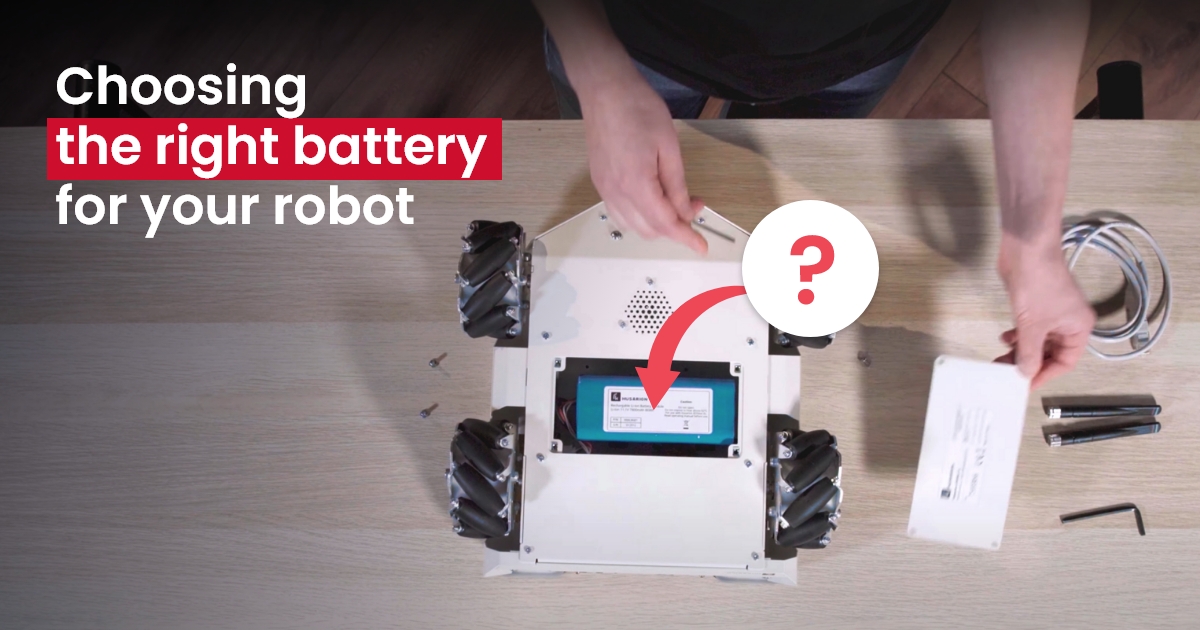
Types of batteries used in robotics
The market offers a variety of batteries, but for simplicity, we can categorize them into two main groups:
1. Batteries suitable for robots:
- Li-Ion — Lithium-ion battery
- Li-Poly — Lithium polymer batteries
- NiMH — Nickel-metal hydride battery
2. Batteries to avoid for robots:
- Lead-acid battery — All types (including VRLA, SLA, gel, or AGM) are not ideal for frequent charging and discharging cycles and perform better as backup power. Due to their low capacity per weight, they are better for stationary applications.
- NiCd — Nickel-cadmium battery — Similar to NiMH but are being phased out due to toxic cadmium and no benefits over NiMH batteries.
- NiH2 — Nickel-hydrogen battery — These are uncommon, unless you're working on projects like the Hubble Space Telescope.
We will skip discussing other types that are expensive, hard to purchase, or challenging to charge.
Below is a table providing a general overview of the above-mentioned battery types suitable for robots. Note that modern Li-Ion cells can be discharged at rates up to 90C, but including all variants would greatly expand the table.
| NiMH | Li-Ion/Li-Poly high energy type | Li-Ion/Li-Poly high current type | Li-Ion/Li-Poly high safety type | |
|---|---|---|---|---|
| Chemistry | NiMH | LiCoO2, LiNiMnCoO2 | LiMn2O4 | LiFePO4 |
| Nominal cell voltage | 1.2V | 3.6 - 3.7V | 3.7 - 3.8V | 3.2 - 3.3V |
| Operating cell voltage range | 1.0 - 1.4V | 3.0 - 4.2V | 3.0 - 4.2V | 2.5 - 3.65V |
| Max voltage for charging | 1.4 - 1.6V | 4.2 - 4.3V | 4.1 - 4.2V | 3.65V |
| Max charging current | 0.1C or 1C (only with ΔV/ ΔT) | ~1C | up to 3C | up to 4C |
| Max discharging current | 1C - 30C | 1C - 2C | 5C - 30C | 1C - 40C |
| Charging method | CC with timer or ΔV/ ΔT (faster) | 2 stages: CC and then CV | 2 stages: CC and then CV | 2 stages: CC and then CV |
| Specific energy | 40 - 120Wh/kg | 150 - 250Wh/kg | 100 - 150Wh/kg | 90 - 120Wh/kg |
| Specific power | 100 - 1000 W/kg | 100 - 400W/kg | 400 - 5000 W/kg | 200 - 7000 W/kg |
| Internal series resistance for a single cell | 5-50 mΩ (for 18650 size) | 15-100 mΩ (for 18650 size) | 10-50 mΩ (for 18650 size) | 6-60 mΩ (for 18650 size) |
* The currents are often expressed in terms of "C", where "C" represents the battery's capacity divided by one hour. For example, a "2C" current for a 2000mAh cell equates to "4000mA".
** CC, CV, ΔV/ΔT are terms for charging methods: Constant Current, Constant Voltage, and Delta Voltage/Delta Temperature (used to detect peaks in voltage or temperature).
Comparison of Li-Ion, Li-Poly, and NiMH batteries
Li-Poly batteries are essentially a subtype of Li-Ion batteries, often regarded as a specialized variant of the conventional Li-Ion battery. What sets them apart? The main difference lies in their production process. Li-Ion batteries are typically encased in a metal can, usually cylindrical, to maintain structural integrity. On the other hand, Li-Poly batteries, which emerged more recently, are designed with a unique construction that allows them to maintain form without needing a rigid external shell.
Electrical characteristics between Li-Ion and Li-Poly batteries are almost the same.
NiMH batteries are favored for their low internal resistance and excellent power-to-weight ratio. They are also significantly safer compared to lithium-based cells, with incidents of explosions being extremely rare (though it's still not advisable to expose them to fire ;) ). However, the specific energy — or energy-to-weight ratio — of NiMH batteries is notably inferior to that of lithium cells.
Battery shapes
Cylindrical

Two 18650 Li-Ion batteries: one industrial type (yellow) and one consumer type (blue).
The most common design for various types of batteries is the cylindrical can. This is used for Li-Ion, NiMH, and, albeit infrequently, for Li-Poly cells (the latter generally do not require a can, as previously mentioned). The cells pictured above have a diameter of 18mm and a length of 65mm, hence their designation as "18650" cells. Therefore, if you come across a 18650 cell, it's highly likely to be a Li-Ion type.
Notice that the yellow cell has a flat "+" terminal, designed for welding together multiple cells to create battery packs (similar to the one shown below). On the other hand, the blue "consumer" cell features a raised "+" terminal, making it easy to insert and remove from a battery holder equipped with a spring on the "-" terminal side. Consumer cells typically include built-in protection circuits and are usually 2-4mm longer than standard 18650 cells.
The battery protection is, by the way, a very valuable feature. Especially for commercial products like Husarion ROSbot which utilizes three cells of the specified form, with elevated "+" and protections inside.
Other prevalent sizes for Li-Ion and NiMH cells include the 14500 (14x50mm), commonly recognized as AA. Additionally, you might encounter sizes like 18500, 26650, 16650, and standard sizes such as AAA, C, and D among others.
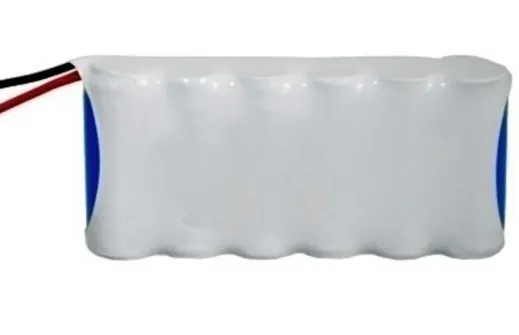
Li-ION battery pack
Prismatic
This shape is common in battery designs that necessitate a metal can, while the cylindrical shape is undesirable. Prismatic Li-Ion cells were frequently used in handheld devices, such as cell phones, before Li-Poly batteries became widespread. Interestingly, the Nokia 3310 was equipped with a NiMH battery in a prismatic shape.
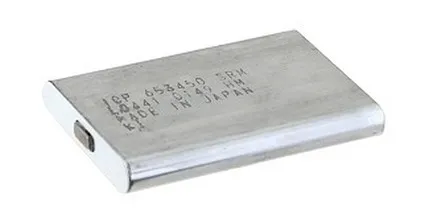
The prismatic battery cell
Pouch cells
Previously noted, Li-Poly batteries do not require a rigid metal casing. They are manufactured as slim, flexible layers that are stacked and sealed within soft pouches rather than being wound into cylindrical cans. This absence of heavy metal housing is why Li-Poly batteries tend to be lighter than Li-Ion batteries, while delivering equivalent power.
Pouch cells are economical and can be exceptionally thin, making them ideal for powering devices like smartphones, tablets, and netbooks.
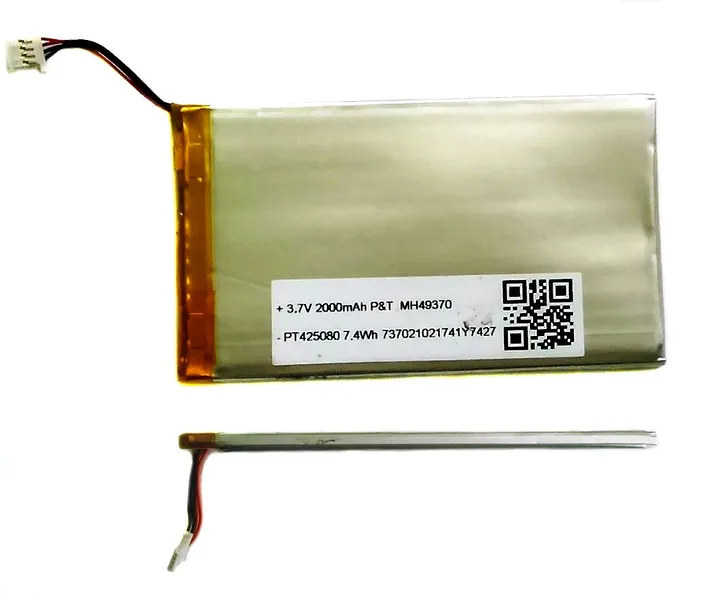
A Li-Poly pouch battery.
Pouches may include protection circuits:
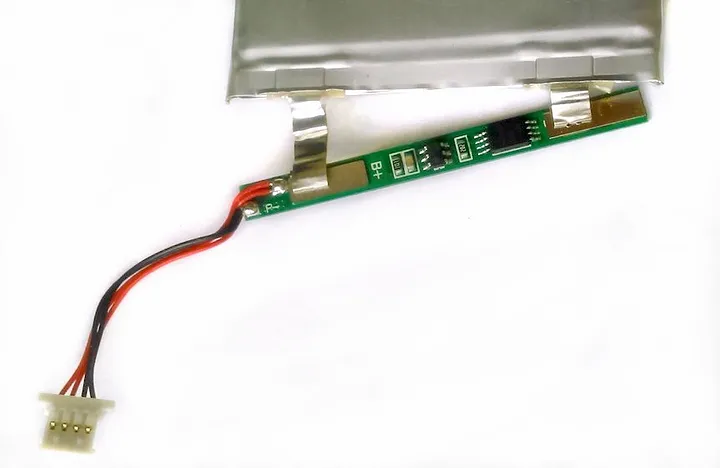
A protection circuit removed from a Li-Poly pouch battery
They can also be arranged in stacks:
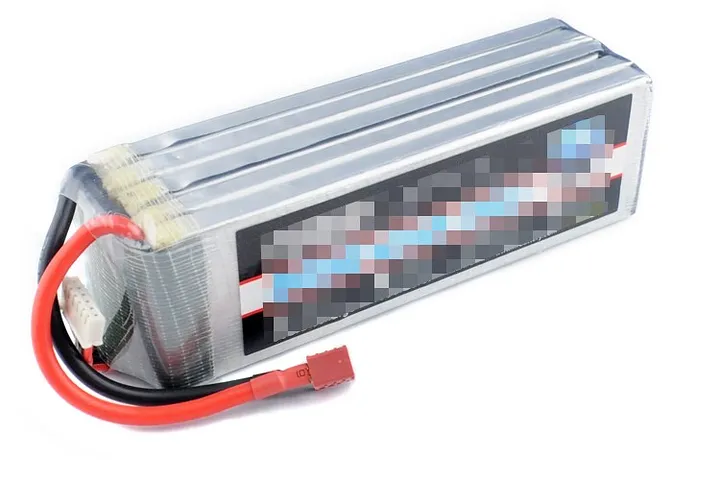
The Li-Poly battery consisting of 5 pouches stacked in a sequence.
These blocks are commonly utilized in drones, RC cars, and other high-powered toys. Li-Poly batteries designed for RC enthusiasts typically lack protection circuits, which is quite unusual when considering the broader consumer market.
It's crucial not to mix up Li-Poly batteries for smartphones with those for quadcopters. The former are generally high-energy types with significant internal resistance and a low maximum discharge current (around 1C). In contrast, batteries intended for RC hobbyists are engineered to handle high discharge rates, reaching between 30–90C. So, while both are Li-Poly batteries, their specifications and uses are distinctly different.
Shape vs safety
Cylindrical Li-Ion cells are a safer choice compared to pouch cells due to the additional protective metal layer. Pouch cells are vulnerable to mechanical damage, making them more suitable for devices with non-removable batteries. The device's enclosure acts as an extra layer of protection, reducing the risk of accidental damage. This design ensures minimal user access to the pouch cell, enhancing safety.
During the operation of the small indoor mobile robotic platforms, such as ROSbot 2R or ROSbot XL, it may be necessary to change or remove the batteries from time to time, and their total weight is not so critical. In the case of Husarion Panther heavy duty outdoor AMR/UGV (Autonomous Mobile Robot / Unmanned Ground Vehicle) platforms, safety is even more important due to the very high total energy stored in the battery. Therefore, these Husarion robots use cylindrical cells.
Example robots — which batteries to choose?
Robots vary widely, each with its own specific power needs. Let’s examine four types of robots to understand their battery requirements:
- Small mobile robot (AMR): ROSbot XL
- Larger mobile robot (AMR/UGV): Panther
- Mini-sumo robot
- Quadcopter
Small mobile robot: ROSbot XL
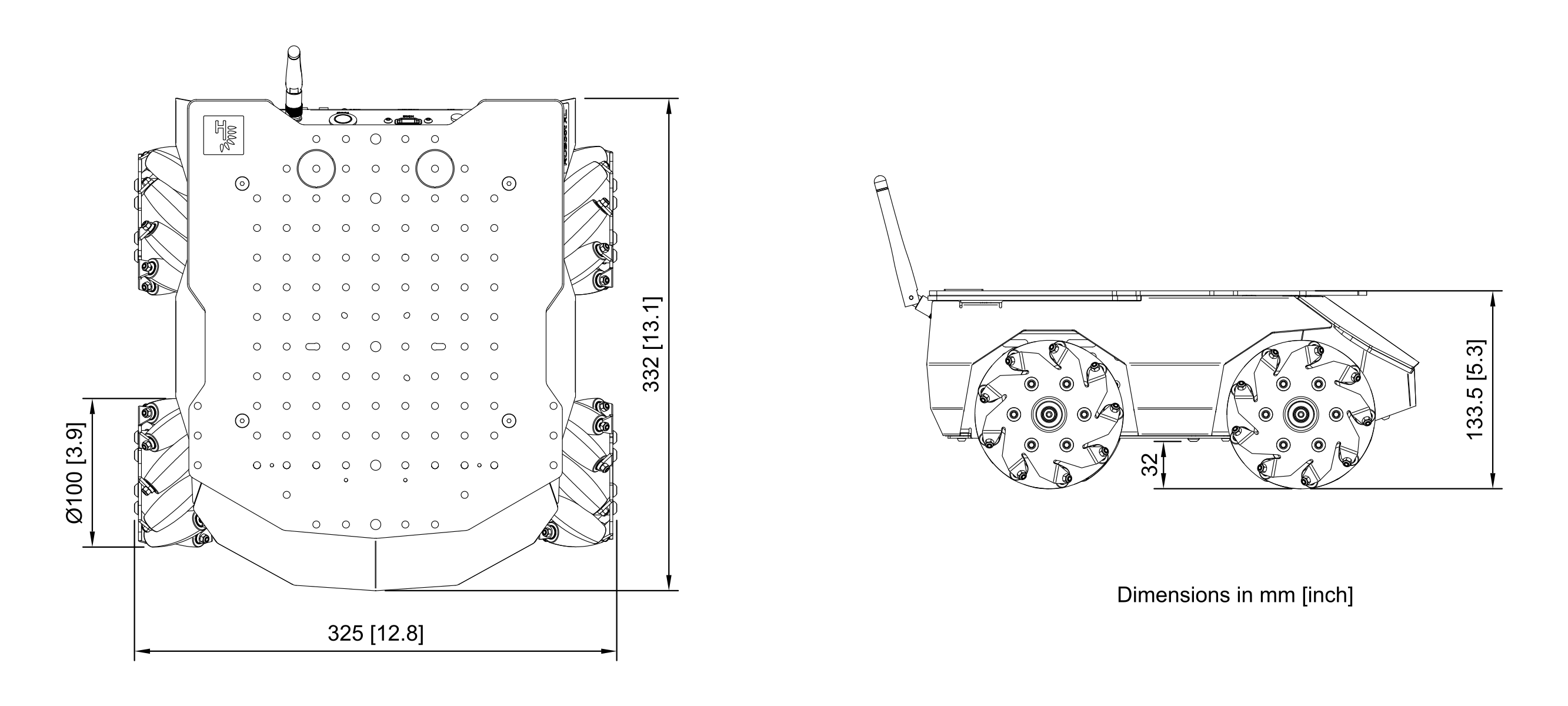
Robot dimensions: 332 x 325 x 133.5mm, weight: 5.4kg
Husarion ROSbot XL is an AMR platform with a 4x4 drive, a low-level controller and user computer. It also incorporates a single board computer along with optional camera and LiDAR onboard. A lot of power-consuming parts. Its primary function is to navigate through various buildings, scanning the layout of rooms to generate detailed maps complete with textures. Speed is not a primary concern for this AGV. The intricate process of adjusting camera focus, conducting room scans via LiDAR, and handling the computation or transmission of raw data inherently limits its movement speed.

To make the things harder, we equip this robot with a 5-DoF manipulator. The exact setup from the ROSbot XL with Manipulation PRO Package.
In given operational design, numerous DC/DC converters are employed to adjust higher voltage levels down to lower voltage yet higher current outputs. This is a common case in many devices like computers or mobile robots. As you can see the specification of ROSbot XL, it utilizes many DC/DC converters to offer a flexible power source for its on-board devices and also for the components added by the user.
The energy consumption of similar devices is more accurately described in terms of power rather than current. As a result, a minimum battery voltage of 9V was determined to be sufficient specifically for motors, considering the fact that all other devices are powered by voltage converters.
For ease of reference and calculation, the average current requirement is derived based on this setup.
| Component | Average power [W] | Max power [W] |
|---|---|---|
| 4x DC motor | 4x5=20 | 40 |
| Manipulator* | 15 | 50 |
| LiDAR | 2 | 4 |
| Camera | 1.8 | 2 |
| Control board | 3 | 4 |
| Single board computer | 16 | 35 |
| Wi-Fi USB card | 0.7 | 0.9 |
| LEDs | 2 | 2.5 |
| TOTAL power [W] | 64.5 | 108.4 |
* - To calculate the maximum total power, we use the average power of the manipulator, as it doesn't use much power when the robot is driving.
| Average current [A] | Max current [A] | |
|---|---|---|
| TOTAL current at 9V | 7.2 | 9.0 |
| TOTAL current at 12V | 5.4 | 12.0 |
Battery Requirements:
- Size: Below 300 ccm.
- Weight: Below 500g.
- Nominal voltage: About 10–12V.
- Nominal discharge current: >= 5.4A.
- Maximum discharge current: >= 9.0A.
- Capacity: Minimum requirement is 6000mAh (to support an average current of about 6A for at least 40-60 minutes).
- Other: A high specific energy is beneficial.
Battery Options:
NiMH Option
- Evaluation: Not suitable this time as energy density is a priority; lithium-based cells offer superior performance.
Li-Ion option
- Type: 9x18650 (3S3P) battery pack built with INR18650–35E Samsung 3500mAh cells.
- Dimensions: 132 x 56 x 36 mm.
- Nominal/minimum voltage: 11.1V (3.7V per cell) / 9V.
- Nominal/maximum discharge current: 8A / 12A.
- Volume/Weight: 235 ccm / 420g.
- Capacity: 7800mAh.
- Specific energy: 206 Wh/kg.
Comment: An excellent option with specific energy (a capacity-to-weight ratio) significantly exceeding requirements for its volume. This option was chosen for ROSbot XL.
Li-Poly option
- Type: A 3S1P battery pack using three, poach-type 6000mAh 3.7V cells.
- Dimensions: 149 x 46.5 x 30 mm.
- Nominal/minimum voltage: 11.1V (3.7V per cell) / 9V.
- Nominal/maximum discharge current: 150A (25C) / 300A (50C) @1s.
- Volume/Weight: 208 ccm / 423g.
- Capacity: 6000mAh.
- Specific energy: 157 Wh/kg.
Comment: Represents a high-current Li-Poly variety — maximum current capability is 25C which is way too much than needed for the intended application. This cause a higher price and lower specific energy. This option has been rejected due to reduced safety of the pouch cells.
Larger mobile robot: Panther
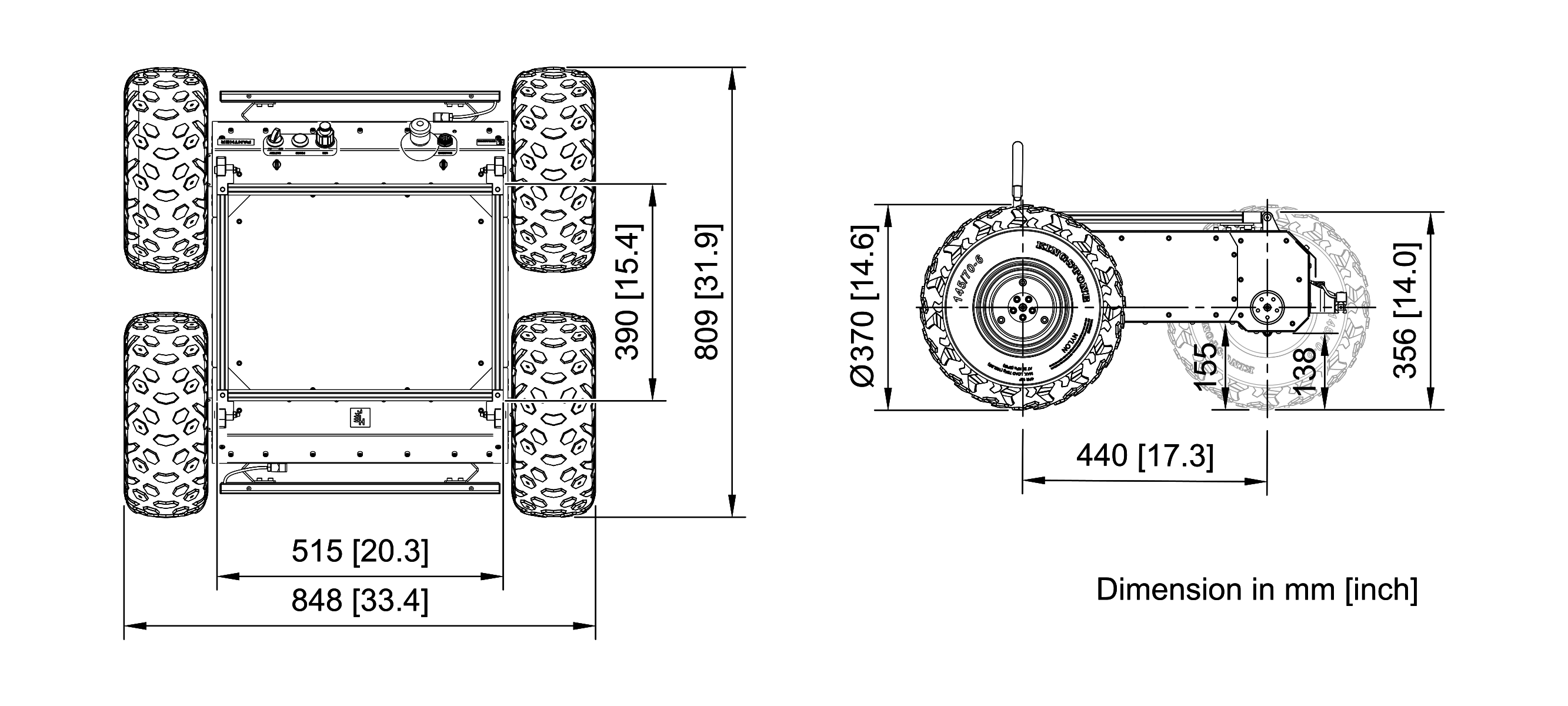
Robot dimensions: 848 x 809 x 375 mm, weight: 55kg
Husarion Panther is an AMR platform tailored for outdoor and industrial environments. The basic functions are similar to ROSbot XL but all components are upscaled. Therefore the whole robot requires proportionally higher power for motors and other circuits.
Panther could be stuffed with many sensors, cameras, and even two manipulators.
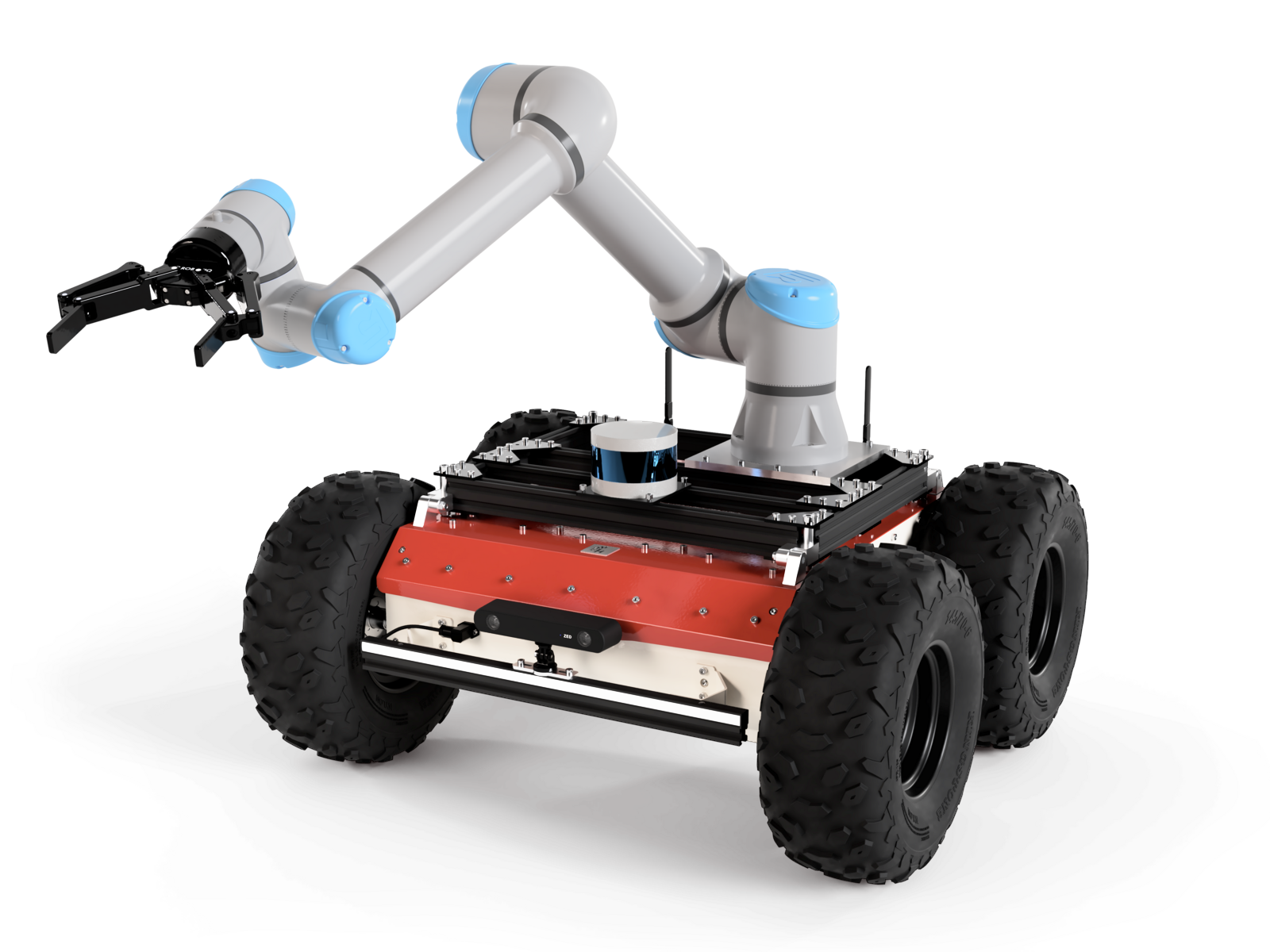
In this example, we will go the opposite. Let's focus on the basic configuration, which includes the bare platform and the user PC inside. The average power requirement of Panther basic components is listed in the table.
| Component | Average power [W] | Max power [W] |
|---|---|---|
| 4x BLDC motor* | 4x200=800 | 1400 |
| Control boards | 4 | 5 |
| Built-in SBC | 10 | 15 |
| RUTX11 router | 5 | 10 |
| User computer | 20 | 60 |
| LEDs | 15 | 25 |
| TOTAL power [W] | 854 | 1515 |
* - We consider the motor power values for practical scenarios, not the maximum power that the motors can handle.
And now the current values:
| Average current [A] | Max current [A] | |
|---|---|---|
| TOTAL current at 32V | 26.7 | 47.3 |
| TOTAL current at 42V | 20.3 | 36.1 |
Battery Requirements:
- Size: Below 3500 ccm.
- Weight: Below 6000g.
- Nominal voltage: About 36V.
- Nominal discharge current: >= 27A.
- Maximum discharge current: >= 47A.
- Capacity: Minimum requirement is 16000mAh (average current of about 24A for at least 40 minutes).
- Other: A high safety, together with a high specific energy, is beneficial.
Battery Options:
Li-Ion option - high energy type
- Type: 100x18650 (10S10P) battery pack built with 2000mAh cells.
- Dimensions: 205 x 190 x 76 mm.
- Nominal/minimum voltage: 36V (3.6V per cell) / 30V.
- Nominal/maximum discharge current: 30A / 50A.
- Volume/Weight: 2960 ccm / 4900g.
- Capacity: 20 000mAh.
- Specific energy: 147 Wh/kg
Comment: A good balance between safety and capacity. The battery uses LiNiMnCoO2 cells made with a good safety margin. This ensures that this high-capacity battery is safe and performs well in a wide temperature range. This option was selected for Panther.
Li-Poly option - high safety type
- Type: A 11S12P battery pack using 18650 1500mAh cells.
- Dimensions: 205 x 235 x 76 mm.
- Nominal/minimum voltage: 34.4V (3.2V per cell) / 22V
- Nominal/maximum discharge current: 27A / 54A.
- Volume/Weight: 3660 ccm / 5600g.
- Capacity: 18 000mAh.
- Specific energy: 110 Wh/kg
Comment: LiFePO4 chemistry is safer than LiNiMnCoO2 but the specific energy is much lower and it does not meet the volume requirement.
Mini-sumo robot
Robot dimensions: 100 x 100 x xxx mm, weight: 0.5kg
Unlike our previous examples, we do not manufacture mini-sumo robots. However, they are popular in student competitions, which is why we created this section for those interested in hobbyist applications.
So, what is a sumo robot? These robots are designed for sumo-style battles against other robots. Competitions typically restrict the robots to a 10 x 10 cm footprint, with no height limitations and a maximum weight of 500g. Mini-sumo robots usually employ two DC or brushless motors and may feature additional actuators for tactics like lifting or destabilizing the opponent.
In our scenario, the robot uses two DC motors for movement and a scoop mechanism for lifting the opponent to disrupt its stability. Initially, the scoop is positioned above the robot to meet size restrictions but moves to a forward position once the match starts. The scoop's movement is managed by an RC servo.
Competitions are generally brief, yet the robot needs to function through multiple consecutive matches. We’ll consider 15 minutes as the minimum required operational time.
For this design, we also plan to use low-impedance capacitors to manage the high-current spikes from the motors, requiring the batteries to sustain peak currents of about 4A. The average current consumption will be around 2A.
| Component | Average current [A] | Max current [A] |
|---|---|---|
| DC motor left | 0.8 | 2.5 |
| DC motor right | 0.8 | 2.5 |
| Servo for a falling scoop | 0.25 | 0.8 |
| Control board | 0.15 | 0.2 |
| TOTAL: | 2 | 6 |
Let's detail the necessary specifications for the batteries:
- Size — The batteries should be as compact as possible.
- Weight — Approximately 150g.
- Nominal voltage — The motors operate at a nominal voltage of 6V, and the electronic circuits typically require a regulated 5V supply. Therefore, the minimum voltage should be 7V to allow for voltage drops and peaks during operation.
- Maximum discharge current — Based on our estimates, a maximum discharge current of 5A should suffice.
- Capacity — With an average current draw of 2A and a minimum operational time of 15 minutes, the required battery capacity is 500mAh.
- Additional features — The capability for fast charging would be beneficial.
With these criteria established, we can now identify several batteries that meet these specifications.
NiMH
7x AAA Battery Pack — FDK HR-4U or Similar
- Dimensions: 74 x 45 x 11.5 mm.
- Nominal/minimum voltage: 8.4V (1.2V per cell) / 7V.
- Nominal/maximum discharge current: 2A / 5A.
- Volume/Weight: 38.3 ccm / 100g.
- Capacity: 930mAh.
- Specific energy: 78 Wh/kg.
- Price: Approximately $12-$25.
Comment: Charging is straightforward and safe. Although charging times are lengthy, these batteries can be used interchangeably with a battery holder, which requires more space. At just 100g, they are light but offer the lowest capacity-to-price ratio.
Li-Ion 3x18650
Tenergy 31012, 11.1V 2200mAh with Protection Circuit
- Dimensions: 68 x 56 x 19 mm.
- Nominal/minimum voltage: 11.1V (3.7V per cell) / 8.4V.
- Nominal/maximum discharge current: 2A / 4.4A.
- Volume/Weight: 72.4 ccm / 140g.
- Capacity: 2200mAh.
- Specific energy: 174 Wh/kg.
- Price: About $27.
Comment: Charging is more complex but faster. It includes a protection circuit to prevent overcharging, over-discharging, and short circuits. Although larger than NiMH, it offers more than double the capacity, reducing the need for frequent charging or replacement throughout the day.
Li-Poly
Hyperion G5 50C 2S 850mAh LiPo
- Dimensions: 75 x 27 x 14 mm
- Nominal/minimum voltage: 7.4V (3.7V per cell) / 6V.
- Nominal/maximum discharge current: 21A / 42A.
- Volume/Weight: 28.4 ccm / 48g.
- Capacity: 850mAh
- Specific energy: 131 Wh/kg.
- Price: About $10
Comment: This is an excellent choice for those prioritizing performance, minimal weight, and low volume. The main drawback is the lower voltage, which necessitates using short cables and LDO regulators for electronics. It lacks a protection circuit, making it a riskier option.
Quadcopter
Robot dimensions: 450 x 450 x 130 mm, weight: 1.2kg
While Husarion specializes in ground platforms, we’re also covering battery selection for small aerial vehicles to address a broader range of applications.
Now, let's delve into the realm of flying robots, emphasizing their need for lightweight construction (after all, they're meant to soar, aren't they?). Picture a drone measuring 45 x 45 cm, equipped with four BLDC motors driving its propellers, complemented by compact yet sophisticated electronic circuits and a radio transceiver. To fuel its flight, a robust power source capable of delivering substantial energy in short bursts is imperative.
Assuming that all weight and motor power calculations for the drone have been meticulously executed, it's determined that a battery boasting a nominal voltage of approximately 14–15V is essential.
| Component | Average current [A] | Max current [A] |
|---|---|---|
| BLDC motor A | 5.5 | 15 |
| BLDC motor B | 5.5 | 15 |
| BLDC motor C | 5.5 | 15 |
| BLDC motor D | 5.5 | 15 |
| Control board | 0.2 | 0.3 |
| TOTAL: | 22.2 | 60.3 |
Battery Requirements:
- Size: Not critical.
- Weight: Below 650g.
- Nominal voltage: Approximately 14–15V.
- Maximum discharge current: Minimum 60A.
- Capacity: Calculator estimate is ~3700mAh (average current 22A for a minimum of 10 minutes operation).
- Additional requirements: Easy battery replacement is essential. A protection circuit is not advised due to the risk of accidental power cutoffs, potentially leading to drone accidents.
Battery Options:
NiHM - not suitable
- NiMH: Unsuitable due to its inferior energy-to-weight ratio compared to lithium-based cells.
Li-Ion option
- Type: 12x18650 (4S3P) battery pack, using KeepPower IMR18650 2500mAh, 3.7V, 20A cells (20A continuous, 35A peak).
- Dimensions: 134 x 57 x 38 mm.
- Nominal/minimum voltage: 14.8V (3.7V per cell) / 12V.
- Nominal/maximum discharge current: 20A / 35A.
- Volume/Weight: 290.3 ccm / 600g.
- Capacity: 7500mAh.
- Specific energy: 185 Wh/kg.
- Price: Approximately $100.
Comment: Although the capacity seems high, it's effectively reduced under high-current demands. Li-Ion cells are not commonly used in drones due to difficulties in sourcing high-current versions and their lower specific power compared to Li-Poly cells.
Li-Poly option
- Type: Turnigy Graphene 5000mAh 4S 45C Lipo Pack w/XT90 (45C continuous, 90C peak).
- Dimensions: 144 x 51 x 41 mm.
- Nominal/minimum voltage: 14.8V (3.7V per cell) / 12V.
- Nominal/maximum discharge current: 225A / 450A.
- Volume/Weight: 301 ccm / 589g.
- Capacity: 5000mAh.
- Specific energy: 125 Wh/kg.
- Price: Approximately $70.
Comment: Although the parameters might be overly optimistic, this remains the preferred option due to its substantial discharge current margin. This battery is expected to be more durable and suited for the high demands of drone applications.
A general note: In this application, the discharge current is relatively high. On the other hand, most brands specify the battery capacity for a much lower discharge current. Therefore, please note that the practical capacity of both options may be proportionally lower than specified.
Summary
Selecting the right battery for your robot is essential for achieving optimal performance, safety, and longevity. This guide has provided an in-depth look at the various battery types, their characteristics, and their suitability for different robotic applications. From small mobile robots to larger autonomous systems and flying drones, the choice of battery can significantly impact your robot's efficiency and effectiveness.
We hope this article has provided valuable insights and practical advice to help you make informed decisions when choosing a power source for your robot. Remember, the right battery not only powers your robot but also enhances its capabilities and ensures reliable operation.
Happy building and may your robots always have the energy they need to excel!
- Even if you can identify your battery as, for example, a Li-Poly LiCoO2 by its appearance, consulting the documentation is crucial. Each chemistry variant can be optimized for either enhanced power output or increased capacity — details not discernible from appearance alone.
- Protection circuits play an important role in increasing the safety and lifespan of your battery. However, if these protections are triggered at high altitude, cut the power, and your drone falls down, those "1000 charge cycles" become less valuable.
- Selection of the optimal battery size, type, high-current capability, and capacity holds greater significance than the simply choosing between NiMH and Li-Ion batteries. Robots are sometimes seen powered by inappropriate sources such as a 6F22 battery, which is similar to towing a 1000kg trailer with a 125cc scooter.
- This article is an expanded version of our piece published 6 years ago on Medium: Batteries: Choose the Right Power Source for Your Robot.
